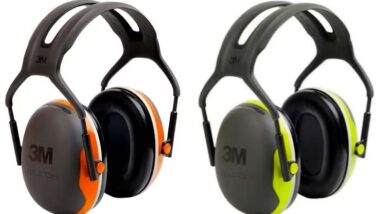 Keeping a patient warm during surgery has its advantages. Without supplemental heating, anesthesia will cause the patient’s body temperature to drop. Warming the patient back up during surgery helps reduce bleeding and shortens recovery time, but certain warming systems come with an increased risk of infection.
Keeping a patient warm during surgery has its advantages. Without supplemental heating, anesthesia will cause the patient’s body temperature to drop. Warming the patient back up during surgery helps reduce bleeding and shortens recovery time, but certain warming systems come with an increased risk of infection.
The Bair Hugger forced-air warming system was introduced in 1988 to help keep surgical patients warm. It consists of a heater and blower mechanism attached to a disposable blanket that is draped either over or under the patient during surgery. The blanket directs the warm air over the patient’s skin.
Several studies show that the forced air from machines like the Bair Hugger significantly disrupts the ultra-clean airflow used in operating rooms. These studies also show that the Bair Hugger is likely to cause temperature differences that cause convection currents. Those convection currents, in turn, could draw air from non-sterile areas, such as the floor, into the surgical site, increasing the risk of infection.
At least one study described air from the non-sterile areas as laden with pathogens, thereby compromising the surgical site’s sterility. A 2011 study, “Forced-air warming and ultra clean ventilation do not mix,” J. of Bone & Joint Surgery,” published in Journal of Bone & Joint Surgery, proposed that the forced-air warmer’s disruption of the ultra-clean air along with its creation of convection currents drawing air from non-sterile areas are plausible explanations for what it found to be a significant association between using forced-air warmers and risk of SSIs.
Forced-Air Warming Systems Linked to Infections
One study published in the Journal of Bone and Joint Surgery concluded that air-free warming systems are preferable to forced-air systems in orthopedic surgery.
British researchers compared the effects of two different warming methods, forced-air warming versus conductive fabric, in simulated hip and spine surgeries. To observe the movement of air during the simulation, they released neutral-buoyancy detergent bubbles near the floor and near the head of the simulated “patient” (a mannequin). They found that during the simulated hip surgery, bubble counts over the surgical site were greater for forced-air warming than for conductive fabric warming. In the spinal surgery, forced-air warming directed air from the floor up to the surgical site in a way that conductive fabric warming did not.
Another study published in The Bone & Joint Journal did a similar analysis of airflow around the site of a simulated knee replacement. Researchers in that study found that waste heat from the forced-air warming system raised the temperature of the air near the surgical site, causing that air to rise and create turbulence over the surgical site. This turbulence resulted in a huge increase in particle concentration in the air to over 2 million particles per cubic meter, compared to 1,000 particles for radiant warming and 2,000 particles for the control subject. The researchers determined the forced-air warming system was drawing potentially contaminated particles from below the operating table up to the site of surgery. The studies did not conclude the additional particles carried bacteria, but they found the increased particles a cause for concern.
The risk of infection appears to be particularly problematic in orthopedic surgeries like hip replacement or knee replacement. Periprosthetic infections following these sorts of surgeries may require removal of the prosthetic, or possibly amputation of the affected limb.
Some patients who suffered periprosthetic infections after surgery involving the Bair Hugger system have initiated legal action against manufacturer Arizant Healthcare Inc. and its parent company 3M Company. Generally, these plaintiffs allege the defendants knew about the potential for Bair Hugger to contaminate a surgical site, perhaps as early as 2009, but did not properly notify patients or their physicians about that risk.
In general, Bair Hugger lawsuits are filed individually by each plaintiff and are not class actions.
Do YOU have a legal claim? Fill out the form on this page now for a free, immediate, and confidential case evaluation. The attorneys who work with Top Class Actions will contact you if you qualify to let you know if an individual lawsuit or class action lawsuit is best for you. Hurry — statutes of limitations may apply.
ATTORNEY ADVERTISING
Top Class Actions is a Proud Member of the American Bar Association
LEGAL INFORMATION IS NOT LEGAL ADVICE
Top Class Actions Legal Statement
©2008 – 2025 Top Class Actions® LLC
Various Trademarks held by their respective owners
This website is not intended for viewing or usage by European Union citizens.
Get Help – It’s Free
Join a Free Bair Hugger Class Action Lawsuit Investigation
If you or a loved one were injured by Bair Hugger complications, you may have a legal claim. See if you qualify to pursue compensation and join a free Bair Hugger class action lawsuit investigation by submitting your information for a free case evaluation.
An attorney will contact you if you qualify to discuss the details of your potential case.
Oops! We could not locate your form.












